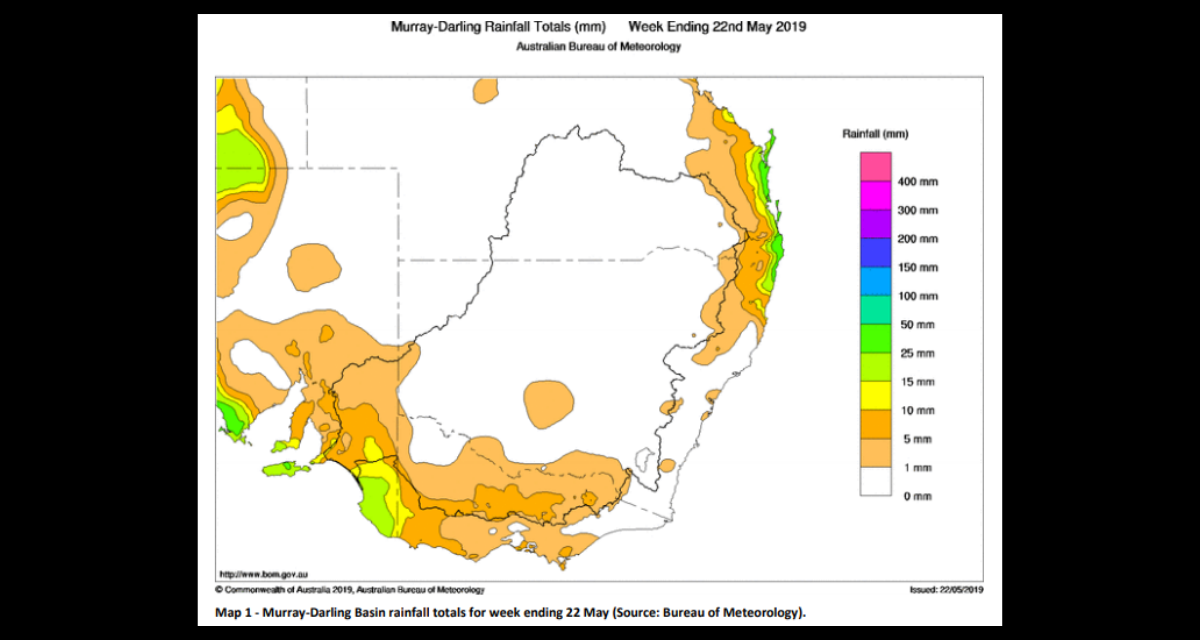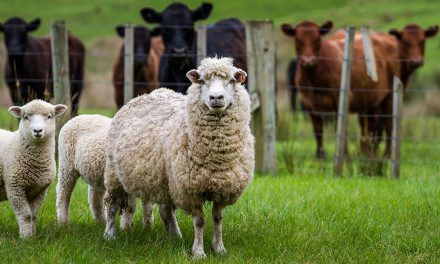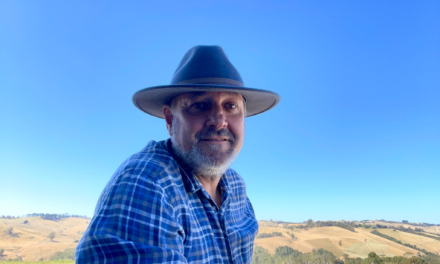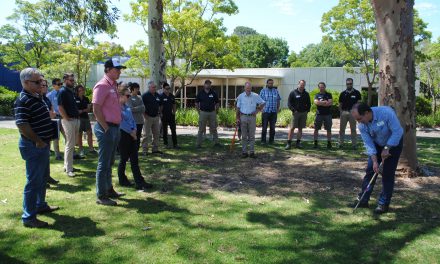Rainfall and inflows
A dominant high pressure ridge kept the majority of the Murray-Darling Basin dry this week, with only modest rainfall recorded in South Australia and Victoria. Rainfall across most of Victoria was generally light, with higher localised totals reported across the Victorian ranges where Mount Wombat recorded 28 mm. In South Australia, rainfall totals over the lower Murray ranged up to the 14 mm recorded at Claypans.
The Bureau of Meteorology is currently forecasting rainfall in the coming week along the River Murray with moderate totals forecast for the upper Murray catchments.
With only light rain recorded over the upper Murray catchment, stream flows along the upper system tributaries reduced towards base flows. On the upper Mitta Mitta River, the flow at Hinnomunjie Bridge declined from 500 to 270 ML/day, while flow in the upper Murray at Biggara eased from 360 to 320 ML/day. Inflows from the Kiewa River, measured at Bandiana, have averaged 850 ML/day, while on the Ovens River, the flow at Wangaratta slowly reduced from 480 to 400 ML/day.
River operations
System operations
System planning for the 2019-20 (June-May) water year is well underway. This planning covers River Murray System inflow scenarios ranging from extreme dry through to wet conditions. These scenarios are used to inform operational decision making to meet multiple objectives and to ‘set the system up’, where necessary, to meet demands during the months ahead. Given the prolonged below average inflows to the River Murray System over the past two years and the latest three month Bureau of Meteorology rainfall outlook which suggests a reduced chance of above median rainfall, dry scenario planning indicates the need for system transfers to recommence in the relatively near future. Under this scenario, transfers from Dartmouth Reservoir to Hume Reservoir and from Hume to Lake Victoria are likely in coming months.
River operations
The MDBA active storage volume increased by 35 GL this week to 2,959 GL (35 per cent capacity).
At Dartmouth Reservoir, the storage volume increased by 4 GL to 2,469 GL (64 per cent capacity). The release from Dartmouth, measured at Colemans, remains near 300 ML/day and is expected to be steady over the coming week. Under dry scenario planning, bulk transfers from Dartmouth to Hume Reservoir may commence in June, although initially at only low to moderate flow rates. These transfers would be made to help provide sufficient water in Hume Reservoir to meet future downstream requirements over coming months, although rainfall and boosted inflows over the coming weeks may delay or decrease transfer requirements under some scenarios. Further information will be provided in the coming weeks.
At Hume Reservoir, the storage volume increased by 9 GL to 459 GL (15 per cent capacity). This week’s Hume release has varied between 3,000 ML/day and the current release of 2,500 ML/day. Over the coming days the release is expected to gradually reduce.
Downstream at Lake Mulwala the level is currently at 124.75 m AHD which is within the normal operating range (124.6 to 124.9 m AHD). Irrigation diversions to both Mulwala Canal and Yarrawonga Main Channel (YMC) have ceased for the 2018-19 season, although around 100 ML/day of environmental entitlement continues to pass through YMC and into the lower Broken Creek for the benefit of native fish, before returning to the Murray. The release from Yarrawonga Weir remains near the target flow of 4,000 ML/day and is expected to remain near this rate over the coming week. This flow target is being maintained is on behalf of environmental water holders and is for the benefit of native fish along the length of the Murray. Without this environmental demand, flows downstream of Yarrawonga would be much lower as current operational requirements are less. The difference between the current release and the operational requirement is being met by environmental entitlements.
The Edward and Gulpa offtakes are currently passing 670 ML/day and 200 ML/day respectively. As the gates at these regulators are now raised clear of the water, inflows to the Edward-Wakool system will fluctuate over winter in response to flow changes in the River Murray at Picnic Point. Return flows from the draining of Mulwala Canal to enable maintenance and construction works over the irrigation off-season have now subsided. This has contributed to the flow at Stevens Weir receding from near 1,900 ML/day to below 500 ML/day over the past week. The flow is likely to be fairly steady over the coming week.
Inflow to the Murray from the Goulburn River, measured at McCoys Bridge, averaged 960 ML/day this week and is expected to be similar over the coming week. The majority of this flow is Goulburn Valley Inter Valley Trade (IVT) water that is being delivered to help meet demands on the River Murray as a result of trade from the Goulburn to the Murray valley. Information regarding current opportunities for allocation trade between the Goulburn and Murray valleys is available at the Victorian water register website.
National Channel diversions ceased on May 15 as the Victorian gravity irrigation season concluded for 2018-19. In the coming days the diversion to National Channel is expected to increase to around 500 ML/day to provide environmental entitlements to Gunbower Creek for the benefit of Murray Cod.
Over the past week the Torrumbarry weir pool has been steadily drawn down to the current level 23 cm below Full Supply Level (FSL) and will be lowered to around 30 cm below FSL over the coming week. It is intended that the weir pool will be lowered to 50 cm below FSL by late June before being returned to FSL by early August in time for the commencement of the irrigation season. This action is part of the weir pool variability program and aims to help improve the health of the river banks. River users and landholders in the weir pool should remain aware of the changing water level in case adjustments need to be made to pumps, moorings and recreational activities.
The release downstream of Torrumbarry Weir averaged 4,400 ML/day this week and is expected to ease towards 3,500 ML/day over the coming days. Lock 26 at Torrumbarry remains closed while repairs are made to damaged inlet valves.
Inflows from the Murrumbidgee River, measured at Balranald, averaged around 350 ML/day. This week the Murrumbidgee IVT balance increased above 15 GL, enabling trade into the Murrumbidgee Valley. The WaterNSW website contains information on the current Murrumbidgee IVT account status.
At Euston, the weir pool level is currently 12 cm below FSL and will be lowered to around 30 cm below FSL by the end of May. Planning is currently underway to lower the weir pool down to 40-50 cm below FSL during June. The downstream release fluctuated around 7,500 ML/day with similar flow rates expected over the coming week.
In the northern Basin, flows resulting from a significant rainfall event in late March have continued to move steadily downstream along various tributaries. Follow-up rainfall helped Warrego flow reach the Darling River, with flows continuing at the first gauge downstream of the Warrego-Darling junction at Louth where the flow is currently persisting near 800 ML/day. The flow front is now between Tilpa (current flow 450 ML/day) and Wilcannia. It remains unclear if any flow will reach as far as the Menindee Lakes. The flows continue to provide environmental benefit, recharging parched waterholes, wetlands and landscapes. Upstream on the Border rivers and Gwydir River, releases on behalf of environmental water holders are continuing to move downstream.
A red level warning (high alert) for blue-green algae remains at Wilcannia on the Darling River and Pooncarie on the lower Darling. A summary of alert levels in New South Wales is available on the WaterNSW website. More information regarding the water quality conditions of the lakes and the lower Darling is available at the WaterNSW website. Information on factors that affect fish is available from NSW Department of Primary Industries website. Information on drought impacts across the Murray-Darling Basin including on fish and system operations is available on the MDBA website.
The Menindee Lakes storage volume is 16 GL (1 per cent capacity). WaterNSW continues to manage the Menindee Lakes in accordance with the Lower Darling Annual Operations Plan. As part of drought contingency measures within this plan, WaterNSW has installed four temporary block banks across the lower Darling upstream of Pooncarie at Court Nareen and Karoola, below Pooncarie near Jamesville and below Burtundy near Ashvale. Water held in these pools will assist in maintaining supply to domestic, stock and permanent plantings along the lower Darling. The release from Weir 32 ceased in February. WaterNSW has advised that releases at Weir 32 are only planned to recommence when significant inflows are received into the Menindee lakes. Despite localised rainfall this week inflows are currently zero and no significant inflows are expected. Water restrictions remain in place across much of New South Wales as a result of the extensive and on-going drought conditions.
On the Murray at Wentworth Weir, operations continue to target a pool level of around 10 cm above the full supply level to assist pumpers in the upper reaches of the Darling River arm of the weir pool whilst there is no inflow from the Darling River. The downstream release averaged 7,300 ML/day this week.
The Lock 9 weir pool is currently varying between FSL and 10 cm below FSL. As part of the weir pool variability program Lock 8 and 7 water levels are currently lowered. At Lock 8, the weir pool is targeting around 80 cm below FSL during May. The Lock 7 weir pool is currently 20 cm below FSL and gradually rising to around 10 cm below FSL this month.
At Lake Victoria the storage increased by 23 GL to 225 GL (33 per cent capacity). The flow to South Australia is currently targeting 3,200 ML/day and will increase to near 4,200 ML/day in the coming days before reducing towards 3,500 ML/day later in the week. The current flow consists of a relatively small amount of environmental water delivered from Broken Creek and the Campaspe River.
Rainfall helped boost the Lower Lakes 5-day average water level by 2 cm to 0.57 m AHD. Over the last several months environmental water delivered to South Australia has helped to slow the rate of fall at the Lower Lakes and prolong small barrage releases, when wave and tidal conditions allow, to support fish condition and improve salinity levels in the Coorong. All fishways remain open. For more information see the South Australian Department for Environment and Water’s latest River Murray flow report.








